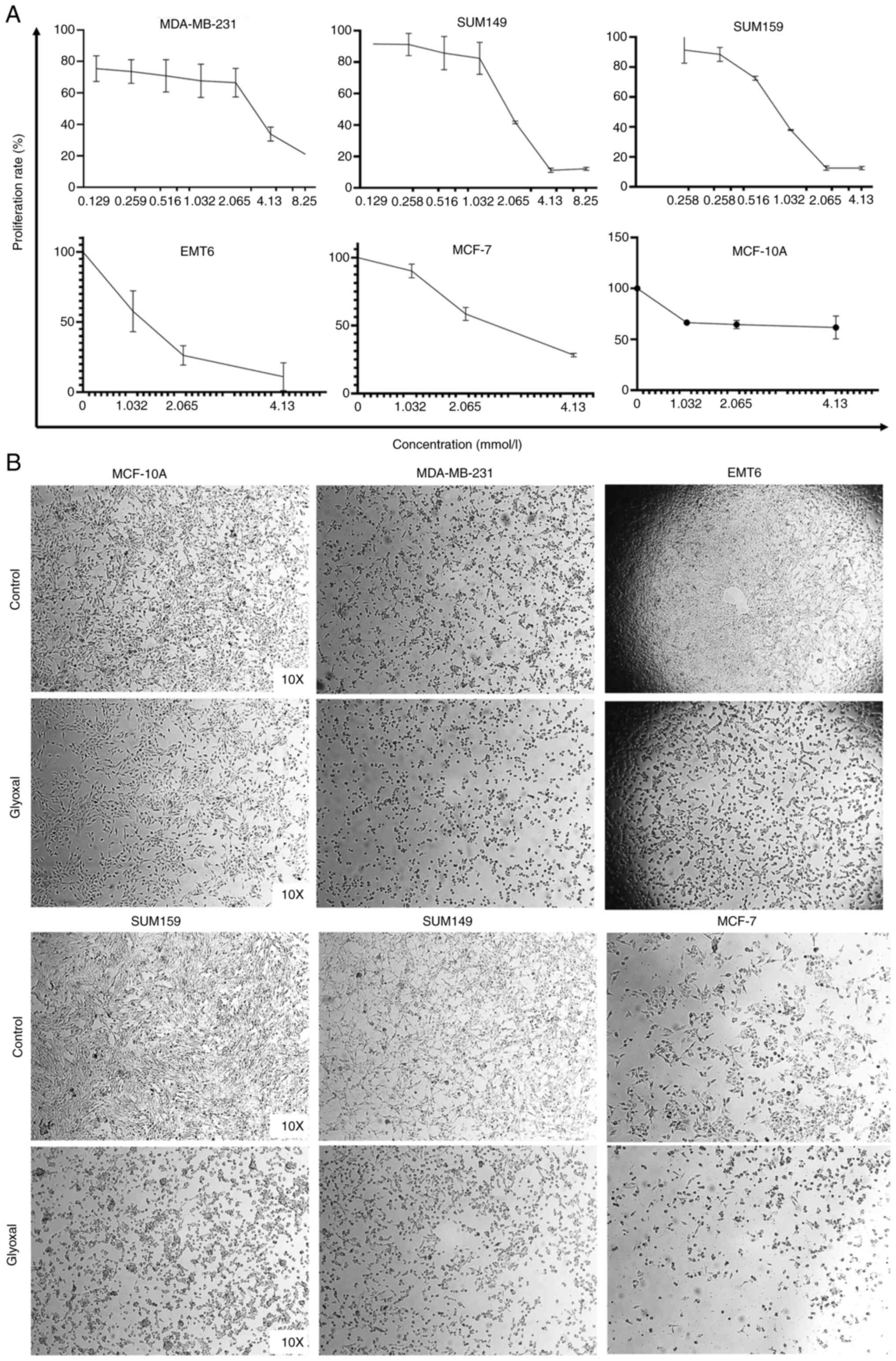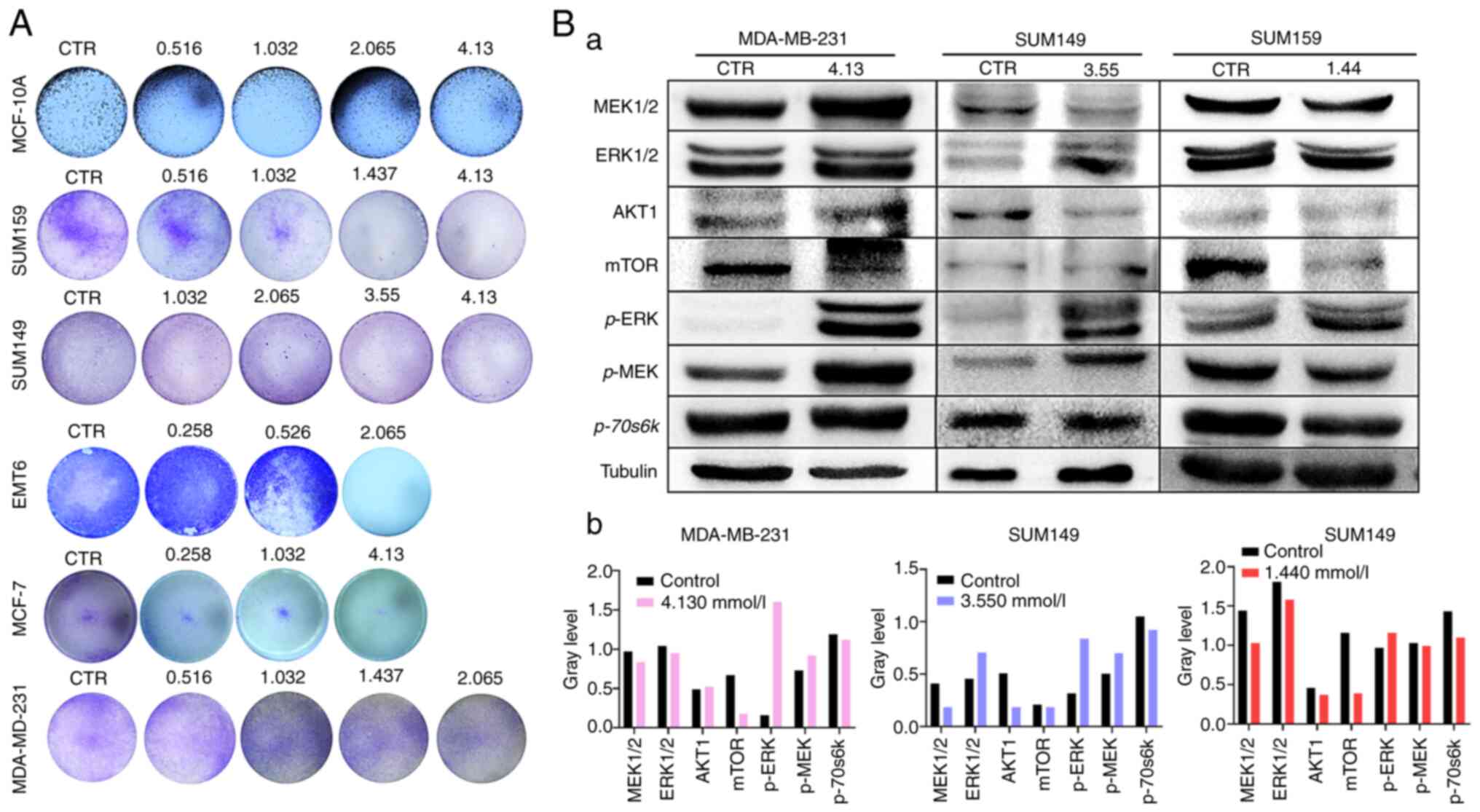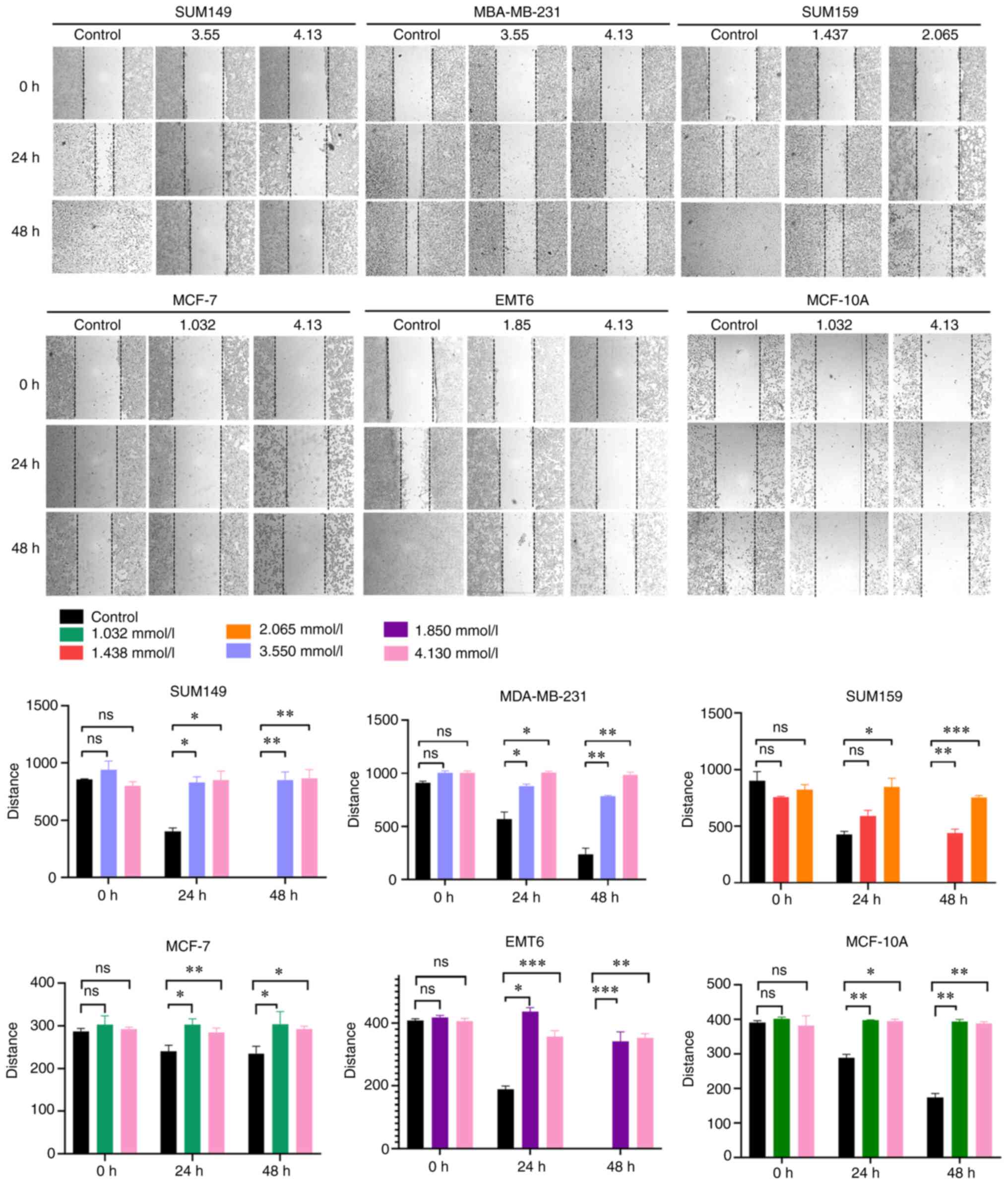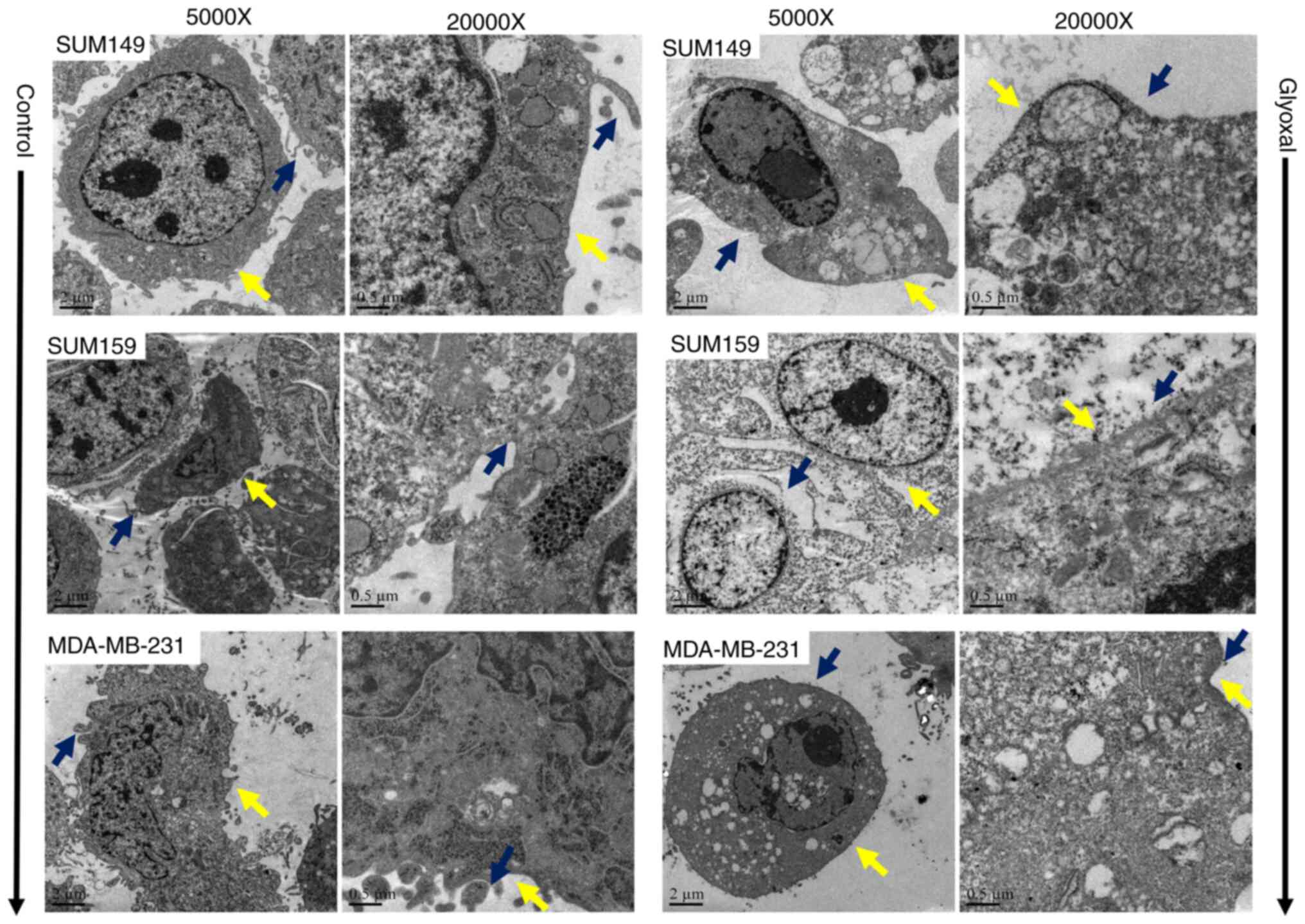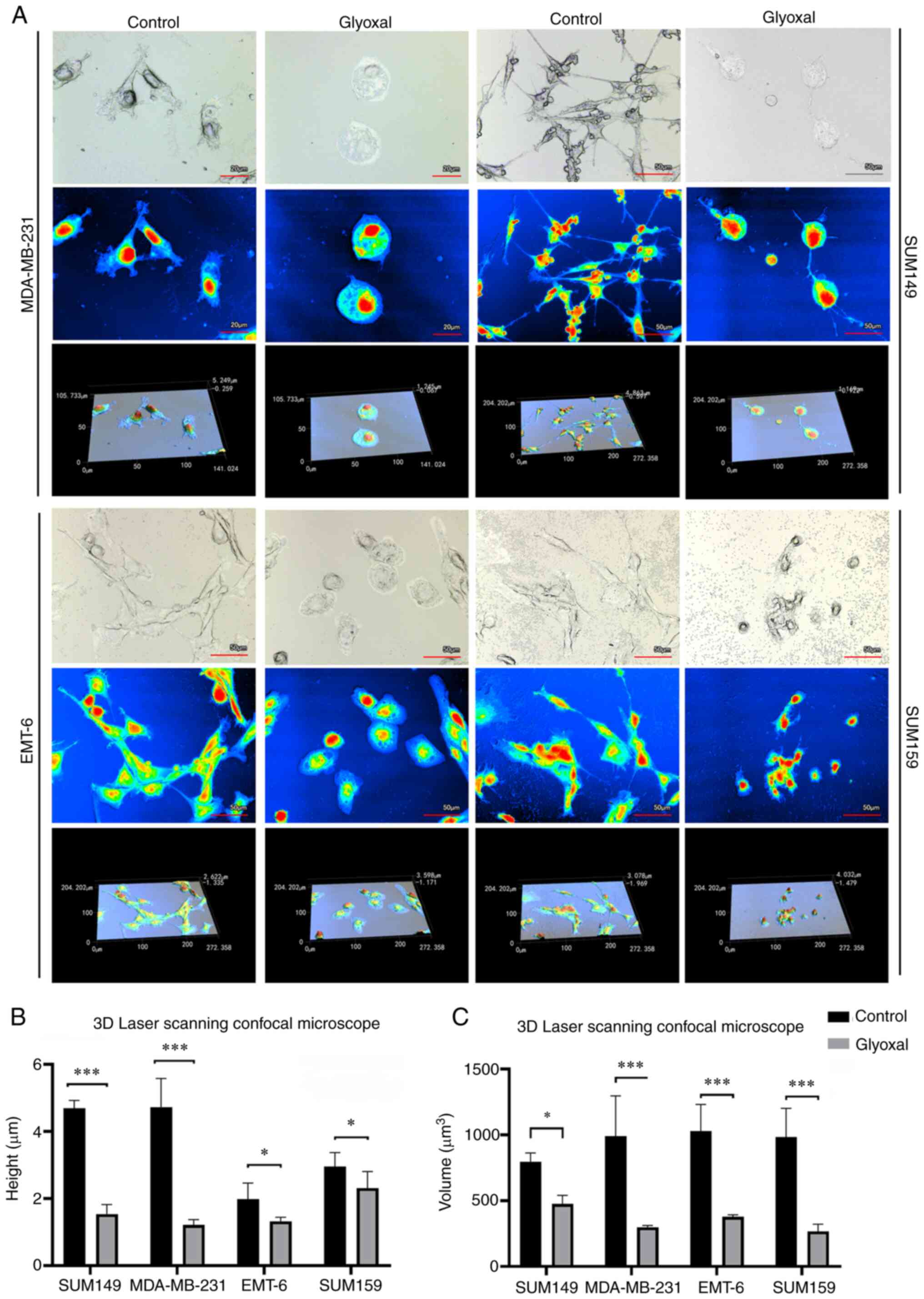|
1
|
Kunkler L: United stand crucial in breast
cancer battle. In: China Daily European Weekly. Europe: China
Daily, 2011.
|
|
2
|
Calado A, Neves PM, Santos T and Ravasco
P: The effect of flaxseed in breast cancer: A literature review.
Front Nutr. 5(4)2018.PubMed/NCBI View Article : Google Scholar
|
|
3
|
Vander Heiden MG and DeBerardinis RJ:
Understanding the intersections between metabolism and cancer
biology. Cell. 168:657–669. 2017.PubMed/NCBI View Article : Google Scholar
|
|
4
|
DeBerardinis RJ and Chandel NS:
Fundamentals of cancer metabolism. Sci Adv.
2(e1600200)2016.PubMed/NCBI View Article : Google Scholar
|
|
5
|
Hung YP, Albeck JG, Tantama M and Yellen
G: Imaging cytosolic NADH-NAD(+) redox state with a genetically
encoded fluorescent biosensor. Cell Metab. 14:545–554.
2011.PubMed/NCBI View Article : Google Scholar
|
|
6
|
Gatenby RA and Gillies RJ: Why do cancers
have high aerobic glycolysis? Nat Rev Cancer. 4:891–899.
2004.PubMed/NCBI View
Article : Google Scholar
|
|
7
|
Haddad M, Perrotte M, Khedher MRB,
Demongin C, Lepage A, Fülöp T and Ramassamy C: Methylglyoxal and
glyoxal as potential peripheral markers for MCI diagnosis and their
effects on the expression of neurotrophic, inflammatory and
neurodegenerative factors in neurons and in neuronal
derived-extracellular vesicles. Int J Mol Sci.
20(4906)2019.PubMed/NCBI View Article : Google Scholar
|
|
8
|
da Silva G: Hydroxyl radical regeneration
in the photochemical oxidation of glyoxal: Kinetics and mechanism
of the HC(O)CO + O(2) reaction. Phys Chem Chem Phys. 12:6698–6705.
2010.PubMed/NCBI View
Article : Google Scholar
|
|
9
|
Banerjee S: Effect of glyoxal modification
on a critical arginine residue (Arg-31α) of hemoglobin:
Physiological implications of advanced glycated end product an in
vitro study. Protein Pept Lett. 27:770–781. 2020.PubMed/NCBI View Article : Google Scholar
|
|
10
|
Quan KK, Kusewitt DF and Hudson LG:
Glyoxal leads to defective keratinocyte migration and
down-regulation of Snai2. J Dermatol Sci. 73:166–169.
2014.PubMed/NCBI View Article : Google Scholar
|
|
11
|
Acevedo KM, Hayne DJ, McInnes LE, Noor A,
Duncan C, Moujalled D, Volitakis I, Rigopoulos A, Barnham KJ,
Villemagne VL, et al: Effect of structural modifications to
glyoxal-bis(thiosemicarbazonato)copper(II) complexes on cellular
copper uptake, copper-mediated ATP7A trafficking, and
P-glycoprotein mediated efflux. J Med Chem. 61:711–723.
2018.PubMed/NCBI View Article : Google Scholar
|
|
12
|
Palanimuthu D, Shinde SV, Somasundaram K
and Samuelson AG: In vitro and in vivo anticancer activity of
copper bis(thiosemicarbazone) complexes. J Med Chem. 56:722–734.
2013.PubMed/NCBI View Article : Google Scholar
|
|
13
|
Lee C and Park C: Bacterial responses to
glyoxal and methylglyoxal: Reactive electrophilic species. Int J
Mol Sci. 18(169)2017.PubMed/NCBI View Article : Google Scholar
|
|
14
|
Goudarzi M, Kalantari H and Rezaei M:
Glyoxal toxicity in isolated rat liver mitochondria. Hum Exp
Toxicol. 37:532–539. 2018.PubMed/NCBI View Article : Google Scholar
|
|
15
|
Rangiah K, Tippornwong M, Sangar V, Austin
D, Tétreault MP, Rustgi AK, Blair IA and Yu KH: Differential
secreted proteome approach in murine model for candidate biomarker
discovery in colon cancer. J Proteome Res. 8:5153–5164.
2009.PubMed/NCBI View Article : Google Scholar
|
|
16
|
Li X, Li X, Wang J, Ye Z and Li JC:
Oridonin up-regulates expression of P21 and induces autophagy and
apoptosis in human prostate cancer cells. Int J Biol Sci.
8:901–912. 2012.PubMed/NCBI View Article : Google Scholar
|
|
17
|
Warburg O: On respiratory impairment in
cancer cells. Science. 124:269–270. 1956.PubMed/NCBI
|
|
18
|
Luengo A, Abbott KL, Davidson SM, Hosios
AM, Faubert B, Chan SH, Freinkman E, Zacharias LG, Mathews TP,
Clish CB, et al: Reactive metabolite production is a targetable
liability of glycolytic metabolism in lung cancer. Nat Commun.
10(5604)2019.PubMed/NCBI View Article : Google Scholar
|
|
19
|
Antico Arciuch VG, Elguero ME, Poderoso JJ
and Carreras MC: Mitochondrial regulation of cell cycle and
proliferation. Antioxid Redox Signal. 16:1150–1180. 2012.PubMed/NCBI View Article : Google Scholar
|
|
20
|
Antico Arciuch VG, Galli S, Franco MC, Lam
PY, Cadenas E, Carreras MC and Poderoso JJ: Akt1 intramitochondrial
cycling is a crucial step in the redox modulation of cell cycle
progression. PLoS One. 4(e7523)2009.PubMed/NCBI View Article : Google Scholar
|
|
21
|
Gabrielson M, Reizer E, Stål O and Tina E:
Mitochondrial regulation of cell cycle progression through
SLC25A43. Biochem Biophys Res Commun. 469:1090–1096.
2016.PubMed/NCBI View Article : Google Scholar
|
|
22
|
Luo XJ and Cao Y: Research progress on
bioenergy metabolic mechanism of cancer*. Prog Biochem Biophy.
38:585–592. 2011.
|
|
23
|
Zhou H, Ivanov VN, Lien YC, Davidson M and
Hei TK: Mitochondrial function and nuclear factor-kappaB-mediated
signaling in radiation-induced bystander effects. Cancer Res.
68:2233–2240. 2008.PubMed/NCBI View Article : Google Scholar
|
|
24
|
Haridas V, Li X, Mizumachi T, Higuchi M,
Lemeshko VV, Colombini M and Gutterman JU: Avicins, a novel
plant-derived metabolite lowers energy metabolism in tumor cells by
targeting the outer mitochondrial membrane. Mitochondrion.
7:234–240. 2007.PubMed/NCBI View Article : Google Scholar
|
|
25
|
Bonnet S, Archer SL, Allalunis-Turner J,
Haromy A, Beaulieu C, Thompson R, Lee CT, Lopaschuk GD, Puttagunta
L, Bonnet S, et al: A mitochondria-K+ channel axis is suppressed in
cancer and its normalization promotes apoptosis and inhibits cancer
growth. Cancer Cell. 11:37–51. 2007.PubMed/NCBI View Article : Google Scholar
|
|
26
|
Wu Q, Fan C, Chen T, Liu C, Mei W, Chen S,
Wang B, Chen Y and Zheng W: Microwave-assisted synthesis of arene
ruthenium(II) complexes that induce S-phase arrest in cancer cells
by DNA damage-mediated p53 phosphorylation. Eur J Med Chem.
63:57–63. 2013.PubMed/NCBI View Article : Google Scholar
|
|
27
|
Xia L, Shen C, Fu Y, Tian L and Chen M:
MGC29506 induces cell cycle arrest and is downregulated in gastric
cancer. Cell Immunol. 281:31–36. 2013.PubMed/NCBI View Article : Google Scholar
|
|
28
|
Wang L, Cao H, Lu N, Liu L, Wang B, Hu T,
Israel DA, Peek RM Jr, Polk DB and Yan F: Berberine inhibits
proliferation and down-regulates epidermal growth factor receptor
through activation of Cbl in colon tumor cells. PLoS One.
8(e56666)2013.PubMed/NCBI View Article : Google Scholar
|
|
29
|
Yu J, Peng Y, Wu LC, Xie Z, Deng Y, Hughes
T, He S, Mo X, Chiu M, Wang QE, et al: Curcumin down-regulates DNA
methyltransferase 1 and plays an anti-leukemic role in acute
myeloid leukemia. PLoS One. 8(e55934)2013.PubMed/NCBI View Article : Google Scholar
|
|
30
|
Liang Y, Yin D, Hou L, Zheng T, Wang J,
Meng X, Lu Z, Song X, Pan S, Jiang H and Liu L: Diphenyl
difluoroketone: A potent chemotherapy candidate for human
hepatocellular carcinoma. PLoS One. 6(e23908)2011.PubMed/NCBI View Article : Google Scholar
|
|
31
|
King A, Selak MA and Gottlieb E: Succinate
dehydrogenase and fumarate hydratase: Linking mitochondrial
dysfunction and cancer. Oncogene. 25:4675–4682. 2006.PubMed/NCBI View Article : Google Scholar
|
|
32
|
Huang S and Millar AH: Succinate
dehydrogenase: The complex roles of a simple enzyme. Curr Opin
Plant Biol. 16:344–349. 2013.PubMed/NCBI View Article : Google Scholar
|
|
33
|
Radu BM, Dumitrescu DI, Mustaciosu CC and
Radu M: Dual effect of methylglyoxal on the intracellular
Ca2+ signaling and neurite outgrowth in mouse
sensory neurons. Cell Mol Neurobiol. 32:1047–1057. 2012.PubMed/NCBI View Article : Google Scholar
|
|
34
|
Phillips SA and Thornalley PJ: The
formation of methylglyoxal from triose phosphates. Investigation
using a specific assay for methylglyoxal. Eur J Biochem.
212:101–105. 1993.PubMed/NCBI View Article : Google Scholar
|
|
35
|
Nokin MJ, Durieux F, Bellier J, Peulen O,
Uchida K, Spiegel DA, Cochrane JR, Hutton CA, Castronovo V and
Bellahcène A: Hormetic potential of methylglyoxal, a side-product
of glycolysis, in switching tumours from growth to death. Sci Rep.
7(11722)2017.PubMed/NCBI View Article : Google Scholar
|
|
36
|
Bellahcène A, Nokin MJ, Castronovo V and
Schalkwijk C: Methylglyoxal-derived stress: An emerging biological
factor involved in the onset and progression of cancer. Semin
Cancer Biol. 49:64–74. 2018.PubMed/NCBI View Article : Google Scholar
|
|
37
|
Yang K, Qiang D, Delaney S, Mehta R, Bruce
WR and O'Brien PJ: Differences in glyoxal and methylglyoxal
metabolism determine cellular susceptibility to protein
carbonylation and cytotoxicity. Chem Biol Interact. 191:322–329.
2011.PubMed/NCBI View Article : Google Scholar
|
|
38
|
Shangari N, Bruce WR, Poon R and O'Brien
PJ: Toxicity of glyoxals-role of oxidative stress, metabolic
detoxification and thiamine deficiency. Biochem Soc Trans.
31:1390–1393. 2003.PubMed/NCBI View Article : Google Scholar
|
|
39
|
Lee C, Kim I and Park C: Glyoxal
detoxification in Escherichia coli K-12 by NADPH dependent
aldo-keto reductases. J Microbiol. 51:527–530. 2013.PubMed/NCBI View Article : Google Scholar
|
|
40
|
Corbett AJ, Eckle SB, Birkinshaw RW, Liu
L, Patel O, Mahony J, Chen Z, Reantragoon R, Meehan B, Cao H, et
al: T-cell activation by transitory neo-antigens derived from
distinct microbial pathways. Nature. 509:361–365. 2014.PubMed/NCBI View Article : Google Scholar
|
|
41
|
Moldogazieva NT, Mokhosoev IM, Mel'nikova
TI, Porozov YB and Terentiev AA: Oxidative stress and advanced
lipoxidation and glycation end products (ALEs and AGEs) in aging
and age-related diseases. Oxid Med Cell Longev.
2019(3085756)2019.PubMed/NCBI View Article : Google Scholar
|
|
42
|
Sun Y, Liu WZ, Liu T, Feng X, Yang N and
Zhou HF: Signaling pathway of MAPK/ERK in cell proliferation,
differentiation, migration, senescence and apoptosis. J Recept
Signal Transduct Res. 35:600–604. 2015.PubMed/NCBI View Article : Google Scholar
|
|
43
|
Chen X, Lan X, Mo S, Qin J, Li W, Liu P,
Han Y and Pi R: p38 and ERK, but not JNK, are involved in
copper-induced apoptosis in cultured cerebellar granule neurons.
Biochem Biophys Res Commun. 379:944–948. 2009.PubMed/NCBI View Article : Google Scholar
|















